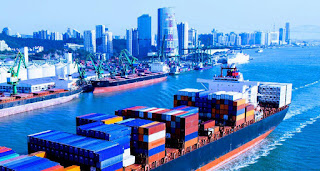Definition:
A Bill of Lading (B/L) is a crucial document in international trade. It is a legal document that is issued by a carrier to the shipper. It contains details about which goods are being shipped, where the shipment is coming from and going to, as well as details of the shipper, carrier, and consignee.
Functions of a Bill of Lading:
- Receipt of Goods: The B/L confirms that the carrier has received the specified goods in the stated quantity and condition. This ensures accountability and provides a record for both the shipper and the carrier.
- Contract of Carriage: The B/L outlines the terms and conditions of the transportation agreement. This includes details such as the agreed-upon mode of transport (sea, air, land), the shipping route, the freight charges, and any limitations of liability for the carrier.
- Document of Title: The B/L represents legal ownership of the goods. It grants the holder the right to claim the goods from the carrier at the destination. This characteristic makes it a valuable instrument in trade finance, allowing for the use of the B/L as collateral for loans or other financial transactions.
Electronic vs. Paper Bills of Lading:
The rise of electronic data interchange (EDI) has led to the emergence of Electronic Bills of Lading (eB/Ls).
- Benefits of eB/Ls over Paper B/Ls:
- Efficiency: eB/Ls streamline operations by eliminating the need for physical document handling, reducing delays and manual errors associated with paper-based processes.
- Sustainability: By eliminating paper usage, eB/Ls contribute to environmental sustainability and align with green initiatives.
- Global Accessibility: eB/Ls facilitate seamless international trade by enabling faster and more efficient information exchange across borders.
- Challenges of eB/Ls:
- Regulatory Frameworks: Inconsistent regulations across different countries can hinder the widespread adoption of eB/Ls.
- Technological Infrastructure: The successful implementation of eB/Ls requires robust and reliable technological infrastructure and digital literacy among all stakeholders involved in the shipping process.
Current Use of Bills of Lading:
Despite the growth of eB/Ls, paper-based B/Ls are still widely used in many parts of the world. However, there is a growing trend towards digitalization, driven by the increasing demand for efficiency, transparency, and sustainability in global trade.
Conclusion:
The Bill of Lading remains a fundamental document in international trade, facilitating the smooth and efficient movement of goods across borders. The transition towards electronic B/Ls offers numerous advantages, including increased efficiency, sustainability, and global accessibility. While challenges remain, continued advancements in technology and regulatory harmonization will further drive the adoption of eB/Ls, transforming the landscape of international trade.

Comments
Post a Comment